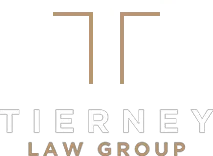|
|
Last Modified on Jul 30, 2025
Author: Jeremiah Froehling
In the Bay Area, there is an ethos of embracing technological advancements, but there are limits when these advancements are at the expense of privacy rights.
Currently in Alameda County, Santa Clara County, Contra Costa County and other counties across the Bay Area almost half the housing stock are renters. With high housing prices and limited supply of homes most of the population is forced to rent. More renters mean more advocates for renters’ rights demanding better amenities and more landlord’s looking for ways to manage an increasing supply of renters in their properties.
To match this rapid changing market landlords and tenants are increasingly adopting connected devices from smart locks and thermostats to AI-powered security cameras and virtual assistants to enhance comfort, security, and efficiency. Whether you’re a law firm advising clients on the landlord-tenant relationship, or a landlord yourself, understanding the legal landscape surrounding privacy rights is now more critical than ever.
Legal Foundation: State and Local Protections
California law provides tenants with significant privacy rights, while also granting landlords certain rights to access rental properties under specific conditions. Under the California Constitution tenants have a constitutional right to privacy. Under the umbrella of the constitutional right to privacy statutory protections have been created to help either safeguard tenant privacy or carve out landlord rights to access rental properties under specific conditions.
California Civil Code § 1954 is the central statute on landlord entry. This statute limits when and how landlords may enter a rental unit of a tenant for including but not limited to emergencies, necessary repairs, or to show the property, provided they comply with notice requirements and do not abuse their right to access.
Generally, a landlord has to provide reasonable written notice prior to entering a unit unless it is an emergency. A landlord must provide at least 24 hours advance notice and a legitimate purpose. The notice has to be either personally delivered to the tenant or to someone of suitable age and discretion who will provide it to the tenant, or left near or under the main door to the rental in a reasonable manner that a person would discover the notice. Cal Civ. §1954(d)(1). The notice must state the date, the approximate time, and the reason for entering.
Common landlord entry reasons for entering are one of the following:
- To make necessary or agreed repairs, decorations, alterations or improvements
- Supply necessary or agreed services
- To show the home to buyers, other renters, workers, or contractors
- To inspect the home with the tenant to agree on necessary repairs and cleaning before the tenant moves out
- Tenant has abandoned or surrendered the home
- Pursuant to court order
- For reasons related to a water submeter in the home
- To inspect waterproofing and structural strength of an outdoor balcony or similar structure
However, notice of entry may not be required if a tenant can agree by written confirmation such as email or text message to the landlord’s entry. Verbal notice is also enough in cases the landlord has told the tenant in writing that their home is listed for sale. For 120 days after the listing notice, the landlord can give the tenant verbal notice of entry.
If the landlord does not provide a tenant with appropriate notice, a tenant does not have to let them in. As a cautionary note, the above requirements may apply differently if a tenant is renting only a room or portion of a house or apartment rather than the house or apartment as a whole. A landlord does not need to provide notice when there are emergencies, abandonment, or consent entry.
The standard for landlord entry is under a reasonableness standard. In Dromy v. Lykovsky the court adopted a reasonableness standard for landlord access, emphasizing that landlords must act within the bounds of the law and respect tenants’ privacy. Dromy v. Lukovsky, (2013) 219 Cal.App.4th 278.
Although it’s important to note within the residential rental agreements landlords can further carve out exceptions for the parties to agree to landlord’s entry for other reasonable circumstances so long as they do not violate the above standard. While written with physical entry in mind, its logic increasingly applies to digital “entry” via remote-controlled smart devices.
The Smart Home Revolution: Opportunities and Risks
Smart home devices have already begun to better the living experience of renters. People already can control their apartment’s climate from their phone with their Nest app, grant visitors access with a text when they are away with their August Smart Lock, or feel safer thanks to real-time security alerts from a Ring camera. These conveniences are increasingly standard in Bay Area rental properties, catering to a tech-savvy population and driving up property values as a selling feature point.
Yet, these same tools often collect, store, and share large quantities of personal data including video footage, voice recordings, access logs, and device usage patterns. When both landlords and tenants interact with this technology, the lines of ownership, access, and control over that data can blur.
For instance, Landlord’s must be careful how these use data to screen potential tenants. Tenant privacy is protected under statutes like the California Consumer Credit Reporting Agencies Act (CCRAA). In Cisneros v. U.D. Registry, Inc., the court held that requiring tenants to waive all privacy rights to financial and medical information violated the CCRAA and the federal Fair Credit Reporting Act (FCRA) Cisneros v. U.D. Registry, Inc., 39 Cal.App.4th 548 (1995). These laws ensure that tenants have control over their personal information and prohibit unreasonable demands for disclosure. Landlord’s must be aware to not exceed those limits.
Defining Smart Technology Use in Rentals
Although smart technology definitions differ, common usage and best practices for landlords is often used in the following ways:
Smart Locks and Entry Systems
Smart locks offer convenience but also raise key privacy issues. If a landlord retains access to digital entry logs, they may learn when tenants come and go, or even grant entry to third parties. Best practice is for landlords to provide exclusive access to tenants and only retain override capabilities for emergencies, in line with statutory notice requirements.
AI-Powered Cameras and Monitoring Devices
While exterior security cameras are generally permissible if they do not target areas where tenants have a reasonable expectation of privacy such as inside the unit or through windows, interior surveillance is almost always prohibited without explicit, informed consent. AI-powered devices add further complications, as they can analyze and interpret data in ways not contemplated by traditional surveillance laws.
Connected Appliances and Energy Meters
Smart thermostats, lights, and appliances may collect occupancy data, usage patterns, and more. Without clear policies, there is a risk of over-collection or misuse of this information. Tenants should be notified of all devices capable of data collection, and data sharing should be limited to what is strictly necessary for maintenance or safety.
Landlords must remember under California Civil Code § 1927 a tenant has an implied covenant of quiet enjoyment. The covenant of quiet enjoyment state that a tenant has a right to enjoy his or her rental unit without “substantial interference” from the Landlord. This is a vague standard and must be followed with care when it comes to digital entry. This right is implied in every lease agreement meaning that even if it is not expressly agreed to by the parties in writing it will still be held to be an enforceable right by the tenant. CA Civil Code 1927; Guntert v. City of Stockton, 126 Cal. Rptr. 690 (Ct. App. 1976).
As a landlord a risk assessment must be made as to surveillance overreach, data security, and consent/disclosure of stored data. Landlords in setting up surveillance of a property should avoid improper management of smart cameras and microphones that could lead to illegal monitoring of tenants’ private lives.
Be aware that the data stored can be considered sensitive tenant information and if stored in cloud-based storage systems it may be vulnerable to hacking or accidental exposure. The best way to avoid disputes over this data is to make your tenants aware of the data being collected or provide how it is being used to avoid disputes or legal challenges.
When does the “substantial interference” standard apply?
The standard applies to Landlord’s ability to address an issue that is reasonably within the Landlord’s control and the interference is frequent or severe enough to amount to a violation. However, the activities that a tenant are able to claim against a Landlord have limits. A tenant cannot enforce being free from mild annoyances and inconveniences.
How severe is severe enough?
This will depend on the facts of the situation, especially in areas that are novel such as the smart technology mentioned above. As of now what fits within the standard are loud construction at unreasonable hours, outside lighting that interferes with a tenant’s sleep, unwelcome text messages, phone calls, and visits or other communications from the landlord or a person that works under the authority of the landlord. However, all of these must be within the landlord’s control. Cities such as San Francisco, Oakland, and San Jose may impose stricter rules, including additional disclosure requirements regarding surveillance devices in rental properties.
Emerging Issues: The Future of Smart Rentals in the Bay Area
The legal landscape is slow to evolve to match the fast-paced changes of technology. We are seeing new developments in 2024 San Francisco’s legislation added Section 37.10 C to their rent ordinance to prohibit the sale or use of algorithmic devices to set rents or manage occupancy levels for residential units in San Francisco. The new law specifically targeted companies like RealPage and Yardi. We will see if laws such as these pop up more throughout the Bay Area.
As the technology changes new concerns arise such as AI-powered analytics being used to predict tenant behavior’s “willingness to pay” or compiling data to flag “anomalies” raising ethical questions about profiling and discrimination. The rise of “digital landlords” property managers who rely heavily on algorithms for decision-making may also pose new privacy challenges. On the flip side concerns that tenants could put forth fake people renting through AI-powered tools could cause confusion and frustration for landlords.
Policymakers in the Bay Area are beginning to address these gaps, but the pace of legal change often lags behind technological innovation. Until clearer regulations emerge, it falls to landlords, tenants, and their legal representatives to proactively address privacy concerns.
Conclusion: Navigating the Smart Tech Frontier
As Bay Area rental properties become ever more entwined with smart technology and AI, the importance of clear, proactive communication about privacy has never been greater. For law firms representing landlords a nuanced understanding of state and local law as well as the technical realities of connected devices is essential. By fostering transparency, consent, and robust data protections, all parties can help ensure that the promise of innovation does not come at the expense of fundamental privacy rights and bolsters a more harmonious landlord tenant relationship.
For personalized advice on your smart rental property in the Bay Area, consult with our experienced team. We are here to help you navigate the future of housing law, one connected home at a time.





